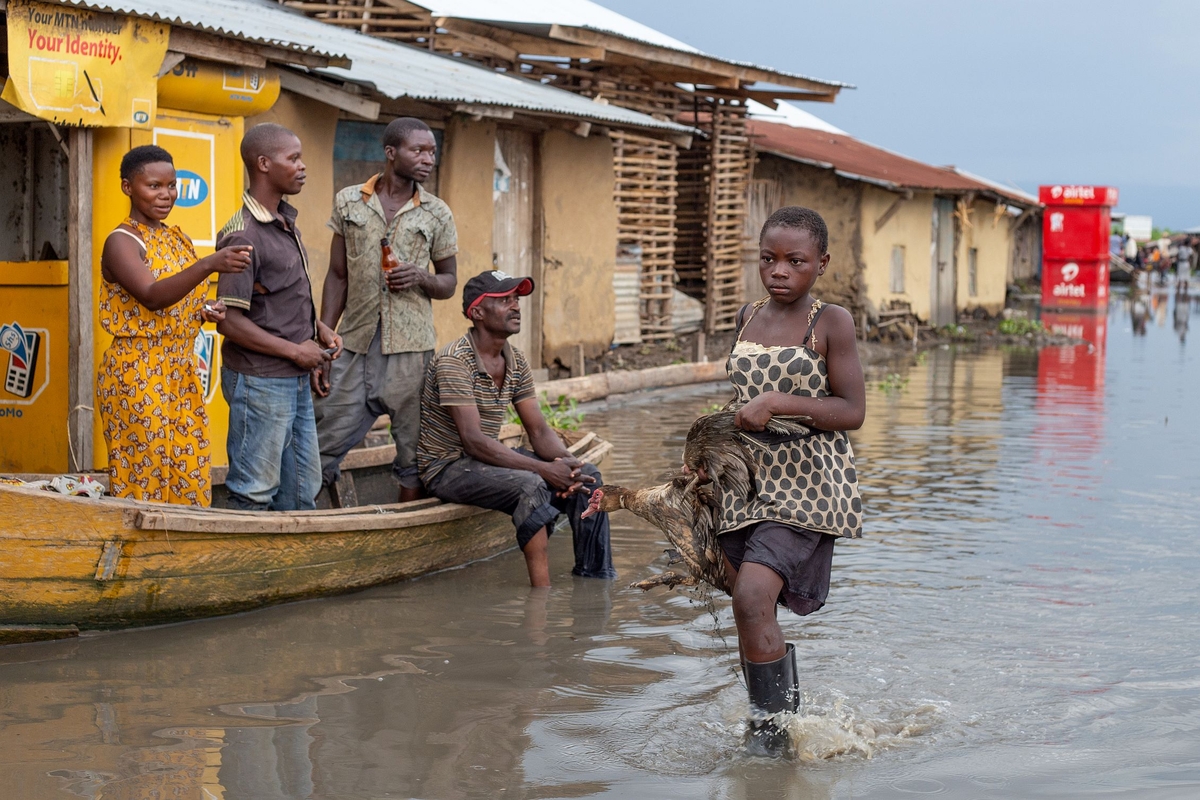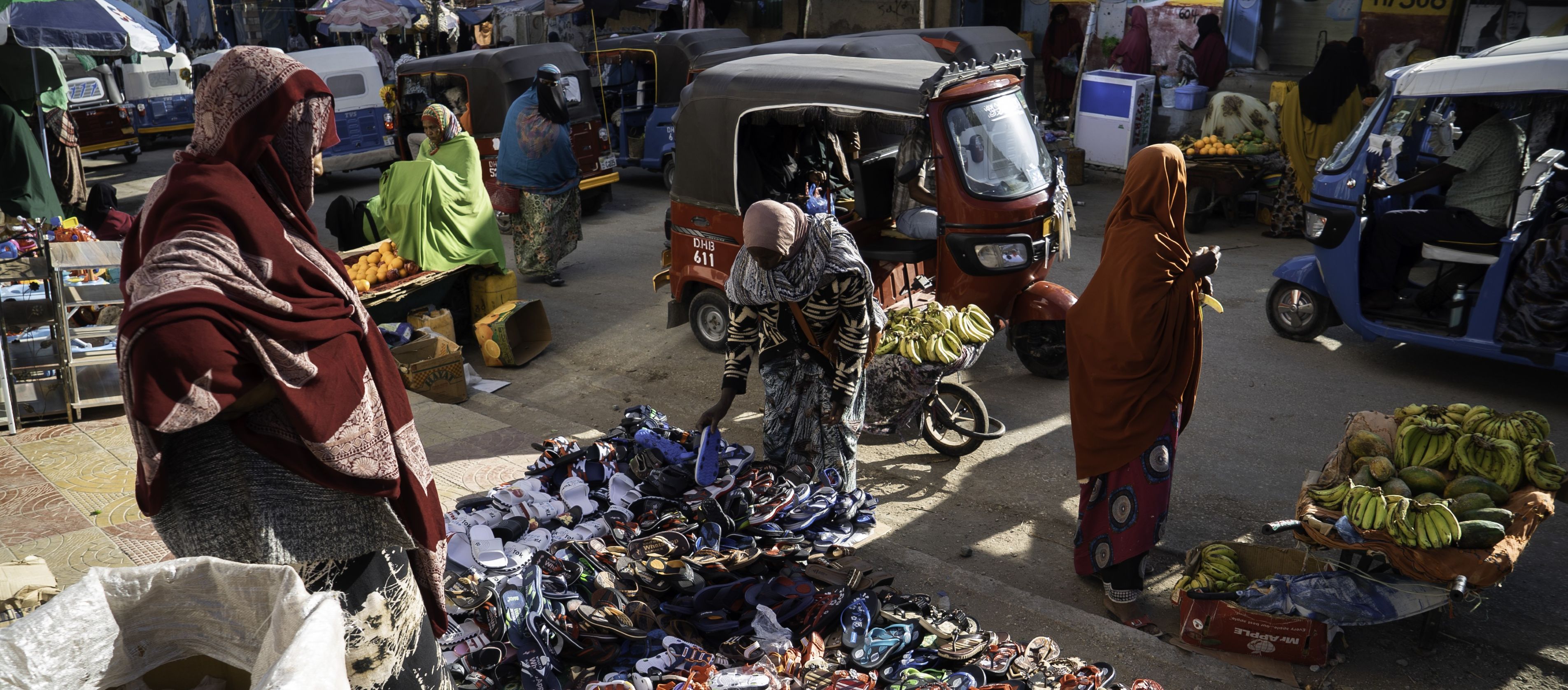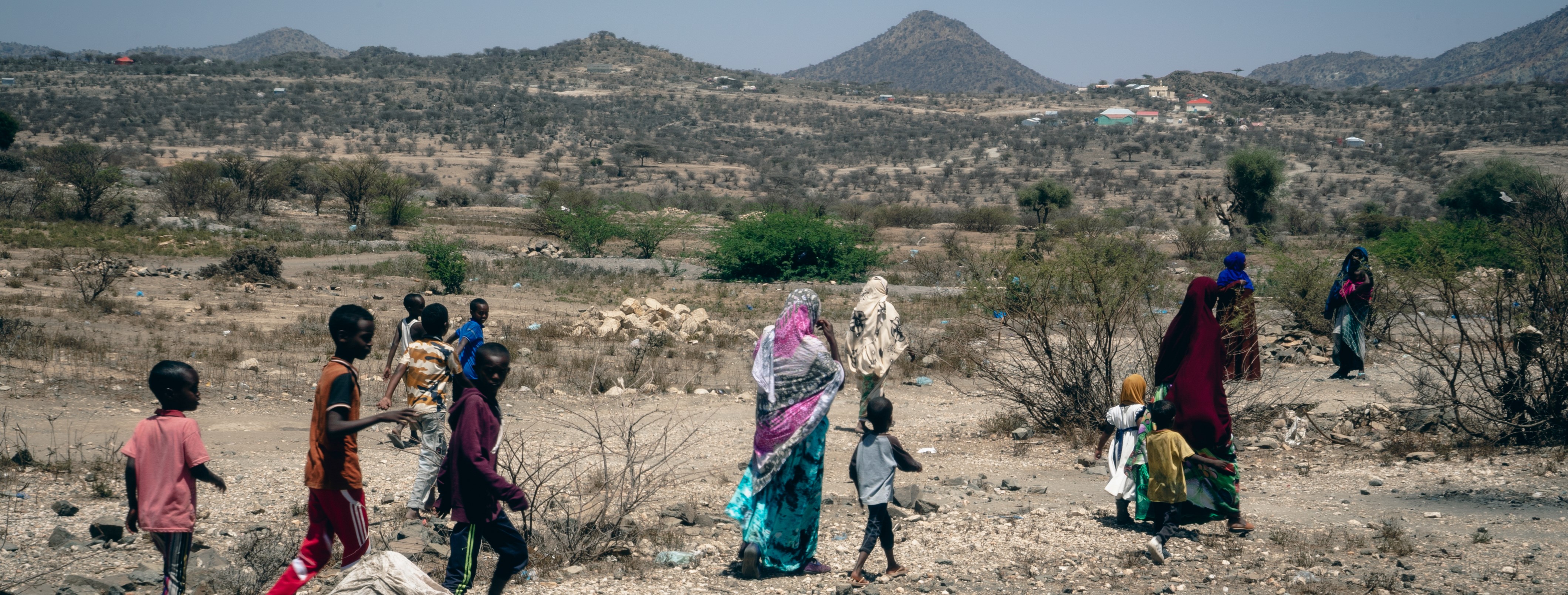By Dr Evan Easton-Calabria. Senior Research Officer, Refugee Studies Centre, University of Oxford. Advisor, Cities and Migration Programme, Cities Alliance.
Global displacement is rising, and the trend is projected to continue. According to data from UNHCR, today 1 out of every 95 people in the world is displaced. While many of the world's 80 million displaced have fled due to conflict, over the past decade (2010-2019), the Internal Displacement Monitoring Centre estimates that 23.1 million people have been displaced due to weather-related events.
In the first half of 2020, approximately 9.8 million people were displaced due to hydrometeorological hazards and disasters, mostly in the Horn of Africa and South and South-East Asia.
Estimates by the World Meteorological Organization indicate that the number of people displaced in the second half of the year due to flooding, hurricanes, and typhoons is likely to have brought the total for 2020 close to the decade’s average, illustrating how quickly this type of displacement is increasing.
One trend of disaster-related displacement is its prolonged and cyclical nature – many people are unable to return to their homes due to the scale of destruction or the repeated nature of climate-induced shocks, meaning they must ultimately settle and integrate elsewhere.
“As drought-affected communities in the Horn of Africa may lack the resources to engage in long-distance migration, they are more likely to move within their own country or to nearby urban areas. Those experiencing extremely depleted resilience and resources may no longer have the funds to pay for their journey and stay put or move shorter distances to remain close to social networks and their homes, rather than leaving the region.” (Tegebu 2020)

In the case of climate-induced migration, forced migrants increasingly move to the nearest safe city or town. At the same time, these smaller cities and towns generally lack the resources or ability to generate funds to assist large influxes of inhabitants and are often not sites of large-scale humanitarian or development funding. These factors illustrate the importance of better understanding the challenges faced by both urban displaced people and the urban areas that host them in the face of more frequent and severe weather events and resulting disasters around the world.
The effects of climate change are already apparent in many regions of Eastern and the Horn of Africa and are only projected to continue.
Although much climate-induced forced displacement occurs from rural-urban areas, cities and towns will also experience increasing numbers and severity of natural hazards.
These include heat waves and droughts that strain existing electricity grids and lead to urban water shortages as well as low crop productivity that may lead to urban food insecurity. These challenges will be especially pronounced in densely populated areas, such as informal settlements that were haphazardly created to house climate-induced and other forced migrants.
Recommendations
Cities need further support to address increased influxes of climate-induced forced migrants to meet both their needs and support climate-induced changes. The following set of recommendations can offer important guidance to cities within this context:
Engage local governments and other municipal actors in planning and decision-making around addressing climate-induced forced migration. Municipal actors are increasingly demonstrating their interest in engaging on issues of urban forced migration. While local governments are currently recognised in rhetoric as central partners in responding to urban displacement, including to climate-induced forced migration, in many cases they remain outside of core planning and decision-making processes. Engaging local governments and other municipal actors in these areas offer opportunities to ensure funding and implementation occurs locally.
Make planned urban expansion a priority. Research shows that most forced migrants end up in poorer areas of cities and often in already overpopulated informal settlements. As these numbers increase and as hazards hit cities themselves, it is crucial to ensure ongoing access to basic resources, in part through spatial planning and infrastructure development.
Improve climate awareness in programming. Use data and evidence based on forecasting and existing knowledge of climate projections to inform programming at local and national levels. Extending knowledge to include future projections and likelihoods of hazards and their impacts can add a climate change lens to the rationale, long-term planning, and risks assessments of both urban and rural projects.
Early action responses. Integrate Early Warning Early Action (EWEA) techniques into existing urban programming. There is a possibility to utilize simple and low-cost EWEA in urban programming if combined with increased forecasting. Forecast-based Financing (FbF), also known as Forecast-based Action (FbA) is a form of anticipatory humanitarian action, which is provided in the generally short period of time between early warnings and extreme events.
Identify and utilise interventions at a variety of levels to increase water access and improve food security. Identify and utilise interventions at a variety of levels that can offer important alternatives for water access and improved food security. For water access, for example, this includes household- and community-level rainwater harvesting and treatment to make it drinkable. Broader interventions include an emphasis on centralized water systems in cities and settlements. This could occur along with or through a variety of actions such as catchment area rejuvenation using Nature-based Solutions and Ecosystem-based Adaptation to harvest the maximum volume of rainwater. Other options include creating rainwater harvesting, treatment, and groundwater recharging systems at the institutional (local government) level.
Policy interventions. Strengthen the focus on climate-induced forced migration to urban areas in National Adaptation Plans and policies and programs that facilitate adaptation and risk management as opposed to crisis management. Foster municipal emergency response plans for sudden influxes of climate-induced and other forced migrants, including sustainable access to resources such as water. Support international coalitions that recognize the special needs of climate-induced migrants, for many of whom returning home may never be an option as the climate crisis continues.
* This piece is based on a white paper on climate-induced displacement and secondary cities in the Horn of Africa, forthcoming in early 2022. The Cities Alliance Cities and Migration Programme is supported by the Swiss Agency for Development and Cooperation.
Disclaimer: The opinions expressed herein are solely those of the author and do not necessarily reflect the official views of Cities Alliance, its members, or those of UNOPS.

Dr Evan Easton-Calabria






